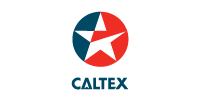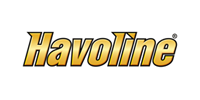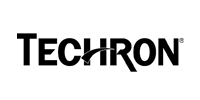Here’s What You Need To Know About Coolants And What They Can Do For You!
What are coolants?
A coolant or an antifreeze as it is commonly referred to, is a liquid that helps regulate the vehicle engine temperatures during operation. Coolants serve relatively simple but important purposes in automotive and industrial applications - corrosion prevention, freeze and boil protection if required.
But in a market of ever-increasing technologies, OEM requirements, and even colors, coolants can seem very complex, maybe even downright vexing. With this complexity comes a series of questions ranging from “what’s the difference between a red coolant and a green coolant?” or “what will happen if I mix the two?” to “is ethylene glycol the same as propylene glycol?”
This article attempts to answer most of these and some other questions by breaking things down into bite-size chunks that are easy to understand.
What makes a coolant?
While a coolant, in general, can be a liquid, or another substance depending upon the application, but our focus is on the engines of the automotive industry. Vehicle coolants are probably the most commonly known or familiar ones in the spectrum of coolants spanning both industrial and scientific areas.
Cars and trucks with internal combustion engines burning gasoline, diesel and natural gas fuels use coolants. The liquid circulating around the engine absorbs heat created by combustion, then carries it away from the engine where it cools and releases the heat to the environment as it passes through a radiator.
Components of a coolant:
Automotive coolants are generally made of three main components- water, glycol and an additive or chemical inhibitor package.
Water:
Water is the most inexpensive and effective heat exchange medium, though it has a relatively narrow temperature range from its freezing point to boiling point. Since vehicles in many parts of the world experience ambient temperatures well below ‘freezing’ during winter, and engine operating temperatures can reach well above water’s boiling point while in use, heat exchange and freeze protection are critical.
Glycol:
Glycol (ethylene or propylene glycol) is added to water to withstand freezing temperatures and to raise the boiling point so that the engine stays cool during operation. Ethylene glycol is perhaps the most common because of good antifreeze properties and availability. One of the key benefits of propylene glycol is non-toxic. Mixing the two glycols in the water together can result in erroneous freeze point readings on a refractometer or hydrometer, so calibration is necessary before measurement.
Additives:
A chemical inhibitor or an additive package is added to coolants to help prevent corrosion in the radiator, water pump and other internal cooling system components. Coolants can be classified into several different types based on the type of the additive as well as the exact compound that makes the additive.
The rainbow of confusion:
Coolants come in different colors, while the color of the coolant - red, orange, yellow, green, blue, purple, pink, etc., may denote a particular coolant type, there is no industry standard that the manufacturers are required to follow when marketing their products. The color of the coolant is simply the result of a dye added to aid in identification and has no effect on its quality or performance.
Types of coolants:
As mentioned above, there are several coolant technologies in the market today and they differ from one another based on several factors such as service application, service life and maintenance requirements. The following are the major types:
Conventional Low silicate
Conventional coolants are used in applications with low silicate requirements, also known as green antifreeze. They are commonly used in automotive, heavy duty, and industrial and recreational applications requiring low silicate and non-extended life conditions.Also known as an IAT (inorganic additive technology), these coolants contain are glycol bases and have silicates as part of its inhibitor package. Conventional coolants are inexpensive and have an average service life of about 50,000 miles. They inhibit corrosion by laying down a chemical layer over metallic surfaces inside the cooling system. This process adds a layer which becomes an impediment to heat exchange and as a result shorten the life of the water pump due to scale buildup.
Fully formulated
Fully formulated coolants are most often green, pink or purple. These are very similar to conventional low-silicate coolants, but fully formulated coolants come with the addition of a pre-charge of supplemental coolant additives (SCAs). SCAs are designed to protect cylinder liners in heavy duty engines from a phenomenon called cavitation. High pressures around the sleeve liners over time can result in pitting and eventual perforation.
To maintain cavitation protection, fully formulated coolants require the periodic addition of SCAs throughout the life of the coolant. Today, most of the conventional low-silicate antifreeze/coolants in the market are fully formulated with a pre-charge of SCA to protect the cooling systems of heavy-duty engines against corrosion, cavitation, liner pitting, freezing and boil over. Apart from the added cost of SCAs, the eventual increase in total dissolved solids in circulation can result in pump vane and seal wear.
Extended Life Coolants (ELC)
Extended Life Coolants (or ELC) are often referred to as organic acid technology (OAT) coolants. These use carboxylate type organic acids, (alkyl monoacid and alkyl diacid) which have been proven to provide metal corrosion protection without the general issues associated with inorganic materials - "plating" or sticking to the hot metal surfaces.
ELCs are designed with special chemistries to prevent liner cavitation from occurring throughout the coolant life. Since this plating and insulation does not occur in ELCs, their heat transfer is improved over conventional coolants.
There are three main types of ELCs -OAT (organic additive technology), LOAT (Lowbrid organic additive technology) and HOAT (hybrid organic additive technology) that will be discussed in depth in the further articles.
Depending on the specific OEM requirement, extender inhibitor packages may be required. Extender can be purchased which, when added, will further extend their long service life. Unlike conventional and fully-formulated coolants, ELC’s do not contain solid additives and thus afford extended pump life.
Regional preferences:
However not all engine coolants need to provide freeze protection, this is especially true when used in tropical climates. In this type of climate, the engines do not require antifreeze properties. Consequently, water-based coolants are often used in these regions - in the Middle East and some parts of Africa.
Mixing coolants
There are varying opinions and gross misconceptions about what would happen if two different coolants are mixed in an engine cooling system.
In general, coolants are compatible - that is, mixing would not have catastrophic results immediately. However, mixing a high-quality coolant with one of inferior quality can results in damaging the engine. If topping off is necessary, it is best to have your coolant checked at the next opportunity to ensure it is fit-for-purpose.
Most people tend to focus on oil changes and other aspects of maintenance which makes coolant maintenance and testing take a back seat. This leads to engine problems if not given proper attention. If you have questions about which coolant is right for your vehicle or want to know when coolant should be checked or changed, it’s always





























